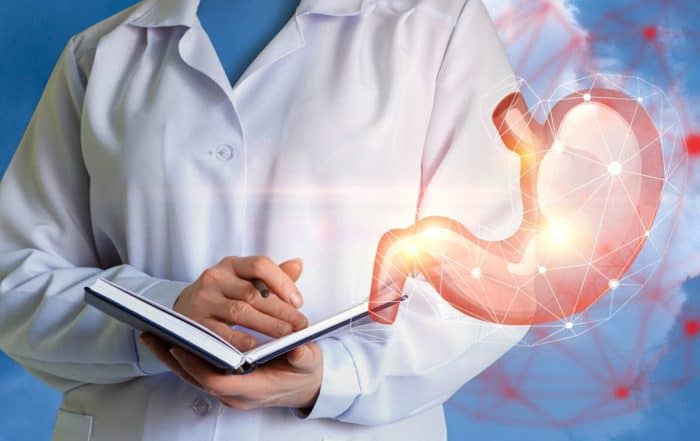Vicky Kobliner answers questions about nutritional strategies for regulating mood in autism. She covers constipation, hydration, food sensitivities, inflammation, vitamin D, food-chaining, and much more. The speaker discusses general information on these topics and asserts that her suggestions do not replace individualized professional medical advice.
_____
Playback of the lecture “Mood and ASD: Nutritional Strategies” (Feb 2019), referred to in this Q&A, is online at: HERE
_____
In this webinar:
1:30 – Mood changes and constipation
3:45 – Keratosis pilaris and other rashes
5:40 – Hydration and mood
7:05 – What about soy?
9:35 – Diets for low mood and depression
12:15 – Vitamin D
13:50 – How to regulate mood
14:34 – Fruits, rice, potatoes, and quantities
17:30 – How to change diets and simultaneously control rage
20:38 – Nutritional support for seizures
25:03 – Stomach bulges and fermentation
27:50 – Meltdowns, inflammation, and vitamin D
33:30 – Specific food focuses, allergies, and phenol
36:00 – Food chaining
38:00 – What do red ears indicate?
41:00 – Food sensitivity tests
43:45 – Diet disruptions and mood effects
45:35 – Resources for evidence of gut and mood interaction
48:04 – Do food sensitivities change over time?
49:15 – Tips for prenatal diets
50:43 – Low-histamine diets and fermented foods
52:00 – Fecal transplant as a potential treatment
Are mood changes associated with constipation the result of physical discomfort caused by constipation or the biological issues that lead to constipation?
Timestamp – 1:30
Gastrointestinal (GI) dysfunction is common in autistic people and is known to impact mood significantly. Constipation is associated with inflammation and other disruptions to gut microbiota. Kobliner notes that a lot of research affirms that depression and anxiety are results of inflammation as well. She explains that when fecal matter is not expelled, toxins from the waste are reabsorbed into the body. This, in turn, causes more inflammation and, therefore, increased gut disturbances and low moods (2:45).
What does the presence of keratosis pilaris and other rashes indicate, and how is it connected to issues with constipation?
Timestamp – 3:45
The presentation of keratosis pilaris (or other skin rashes) alone does not indicate anything. However, they are associated with Omega-3 fatty acids essential for regulated mood and cognition. Kobliner suggests increasing Omega-3 intake to help keratosis and mood. Beyond this, she urges listeners to seek guidance from a medical professional.
How does hydration affect mood?
Timestamp – 5:40
Kobliner explains that even our cells need water/fluid to keep the biochemical pathways functioning. Symptoms associated with insufficient hydration include fatigue, irritability, and constipation. Staying hydrated is a critical aspect of every diet.
Why is it recommended to avoid soy, and is organic soy okay to eat?
Timestamp – 7:05; 24:03
Soy is a common cross reactor with dairy products; their protein structures are similar enough that the body reacts to them similarly. Kobliner, therefore, asserts that individuals with dairy sensitivities should not substitute with soy products. Most soy products, she continues, are genetically modified and processed. If you want to add soy to your diet, she recommends consuming soy in whole organic forms like nuts and legumes (8:00).
Is there a diet recommended for those suffering from low mood and depression?
Timestamp – 9:35
Inflammation is significantly implicated in mood disorders, so determining the cause of inflammation is paramount. A critical relationship exists between processed foods and sugars and elevated bodily inflammation processes. Therefore, Kobliner suggests reducing starchy, processed foods, and pesticide intake (11:20). She also notes the importance of supplementing vitamin D in the winter months. In the brain, serotonin (a happy mood neurotransmitter) interacts with vitamin D and Omega-3s. If either of these is deficient, the brain cannot correctly process serotonin (12:15). She highlights reducing inflammation and ensuring the gut can absorb nutrients well as the two most essential things for regulating mood. The speaker suggests a diet low in processed foods and high in fruits and vegetables, good-quality animal protein, and high-quality fats (13:50).
Which are the best fruits, and in what quantities should they be consumed? What are the best quantities for rice and potatoes?
Timestamp – 14:34; 31:47
Kobliner suggests assessing gut health even in children who do not outwardly present with symptoms. She reiterates the importance of an anti-inflammatory diet and suggests starting with berries and other fruits rich in antioxidants. It’s best to keep servings of rice, corn, and potatoes to one per meal. Fruits, she continues, do not need to be limited. Instead, she advises listeners to pay attention to how each fruit makes them or their loved ones feel (16:20). She constantly emphasizes the need to add foods slowly, one step at a time.
Context: Son only eats carbs and recently started having blind rages. Q: What can stabilize his craving for carbs so I can manage the changes in their diet?
Timestamp – 17:30
There is no one way to do this, as individual needs differ. The speaker proposes mixing foods (e.g., cauliflower blended into mashed potatoes or muffins made with 1/2 nut flour) to slowly change the balance of foods that they’re focused on. A shake or smoothie with vegetables and protein before a meal ensures proper nutrient intake before eating carbs. Kobliner touches on binders like activated charcoal that can help with rages and underscores the need for holistic assessment of what’s causing the rage behavior (19:45).
Is there a way to support seizure patients through nutrition?
Timestamp – 20:38
The Ketogenic diet has been beneficial for some individuals with seizures. Kobliner warns that this diet is particular and must be medically monitored as it is not nutritionally adequate. She also notes the Specific Carb diet, which is not specific to seizures, but is protein and fat based. This substantially decreases carbohydrate intake, and many clients do well on this track (22:45). The modified Atkins Diet for Epilepsy is also available, but with clinical support. Outside of specific diets, she reminds listeners to limit carbs and concentrate on vegetables.
What do you recommend for stomach pains and bulges?
Timestamp – 25:03
Bulging is generally a sign of fermentation, meaning an undesirable bacteria or pathogen is in the gut. These microbes feed on carbohydrates, while good bacteria feed on vegetables. Therefore, removing complex processed carbohydrates and adding probiotics while changing the diet is vital. Kobliner notes that naturally lacto-fermented foods are good for gut health (27:00).
Context: Son recently started having meltdowns. Q: What diet recommendations or actions do you suggest?
Timestamp – 27:50
Kobliner refers to the answer for question 7 and reiterates the importance of vitamin D. She notes the negative impact of inflammation on vitamin D uptake and suggests magnesium as a supplement. The speaker advises listeners to understand and differentiate between different types of magnesium and what they do in the body (30:30).
Context: Son stopped eating fruits and vegetables and now only eats bananas, meat, and carbs. Q: How do I add these fruits and vegetables to his diet?
Timestamp – 33:30
Specific focus on certain foods is often associated with addiction, which frequently happens with bananas. Observing how one’s body and behavior react after eating a banana is essential. Red face, red ears, and extreme hyperactivity are signs of reactions to phenolic food. Kobliner suggests it may be best to remove bananas altogether in case he is allergic. You can also add vegetables and fruit by mixing them into other foods or experimenting with various presentations (e.g., frozen fruit and berry sauces). The speaker outlines the process of food-chaining as another long-term option for changing diets (36:00).
What do red ears indicate?
Timestamp – 38:00
Red ears are generally indicative of either phenols or yeast. The presenter suggests minimizing phenolic foods and normalizing gut function via dietary changes. She also advises testing for phenols, yeast, and food sensitivities (39:18). She discusses the difference between allergies and sensitivities (41:00).
Having tried many diets, we have seen no improvement in behavior. What testing would you suggest for finding food sensitivities so we can avoid any diets he cannot do?
Timestamp – 41:48
There is no one test for food sensitivities, and different diets work for different individuals. The speaker suggests seeking professional medical guidance and assessing GI health to determine the best diet options. “A food sensitivity test is like a bad map in the forest… they’re never 100% accurate. Better than no map, but you will make tons of wrong turns.” This, unfortunately, Kobliner continues, is part of the process, and there is no way to get around it (43:20).
How long is mood affected by disruptions in diet and how can we mitigate the effects?
Timestamp – 43:45
Kobliner suggests digestive enzymes or binders help with mood control and detoxification. Acetylcysteine can also help detoxify but sometimes exacerbates yeast problems (45:05). Herbs and berries are excellent detoxifiers.
Do you know of any great studies explaining why diet changes work and why it matters?
Timestamp – 45:35
While there are fewer studies than Kobliner and her colleagues would like, you can find some significant research on Google Scholar. Jim Adams has several studies on this topic, and research consistently finds that diet is one of the most effective interventions for low mood.
Can food sensitivities change over time?
Timestamp – 48:04
100% yes – the gut and the GI tract change over the lifetime, directly affecting food sensitivities. However, changes are not always rooted in diet, and Kobliner suggests also considering infection.
What are some tips for prenatal diets? Can we use inulin?
Timestamp – 49:15
A medical practitioner should only recommend inulin after a complete medical history. Kobliner has seen inconsistent findings and recommends developing an individualized diet with prenatal professional guidance.
We are on a low-histamine diet for mastocytosis, but behavior is also impacted by foods. Do you have any suggestions?
Kobliner suggests considering things outside of histamine and looking into additional ways to minimize histamine load. She notes that fermented foods and bone broth often have glutamine or histamine and should be avoided.
What about fecal transplant?
Timestamp – 52:00
Fecal matter transplant is still in trial phases, but results show immense potential for GI treatments. Kobliner stresses that such treatments must be done in sterile environments and under medical supervision.

Research Updates: Nutrition and Autism 2023
Kelly Barnhill, MBA, CN, CCN, summarizes emerging research on nutritional approaches and supports for autistic people. She outlines recent investigations on sensory processing and nutrition, dietary changes, and supplementation. The speaker
Exercise may help to lower levels of anxiety in autism
Anxiety is a very common issue for individuals with autism spectrum disorders (ASD), and a new study from China suggests that vigorous exercise may help to reduce this problem. Hailin Li
Lifestyle issues play role in shorter life expectancy
Individuals with autism spectrum disorders (ASD) have a shorter life expectancy than people in the general population, and a new study suggests that lifestyle issues play a large role in shortening
Insulin resistance studied in children, teens with autism
Some abnormalities seen in autism spectrum disorder (ASD) may be caused by insulin resistance affecting the brain and central nervous system, according to a new study from Italy. Melania Manco and
Exercises that are similar to stereotypic behaviors are most effective in reducing these behaviors
A new study from China indicates that while physical exercise can help reduce stereotypic behaviors in children with autism spectrum disorders (ASD), it is important to select exercises that are similar to
The Role of Neurotransmitters in GI Disorders Related to Autism
Kara Gross Margolis, MD, explores recent studies surrounding the role of serotonin and the more extensive gut microbiome in gastrointestinal (GI) and inflammatory conditions related to autism. She presents case studies highlighting







